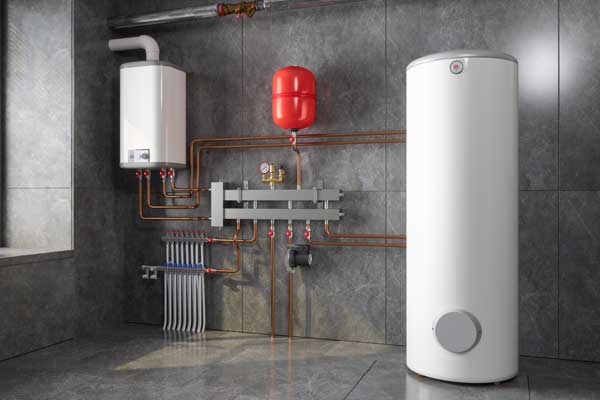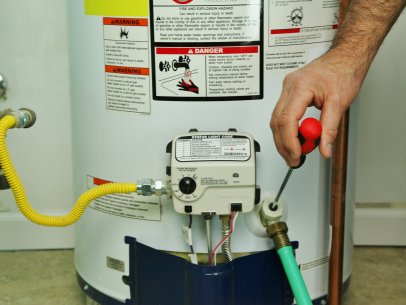Almost everyone may have his or her own perception with regards to Tips For Maintaining Your Hot Water Heater.

Hot water is essential for daily comfort, whether it's for a rejuvenating shower or washing recipes. To guarantee your warm water system runs effectively and lasts much longer, routine upkeep is crucial. This short article provides useful tips and understandings on exactly how to preserve your home's hot water system to stay clear of interruptions and pricey fixings.
Intro
Keeping your home's hot water system could appear complicated, yet with a few straightforward steps, you can ensure it runs smoothly for several years to come. This overview covers everything from comprehending your hot water system to do it yourself maintenance tips and recognizing when to employ professional aid.
Relevance of Keeping Your Warm Water System
Normal upkeep not just prolongs the life-span of your hot water system however also guarantees it operates efficiently. Overlooking maintenance can cause decreased efficiency, higher power costs, and even early failing of the system.
Indicators Your Warm Water System Demands Upkeep
Knowing when your hot water system requires interest can protect against major issues. Keep an eye out for signs such as irregular water temperature level, strange sounds from the heating system, or rusty water.
Understanding Your Warm Water System
Before diving right into upkeep tasks, it's helpful to recognize the basic elements of your warm water system. Commonly, this consists of the hot water heater itself, pipelines, anode rods, and temperature controls.
Monthly Maintenance Tasks
Regular monthly checks can assist capture minor problems before they rise.
Purging the Hot Water Heater
Purging your water heater removes sediment buildup, improving efficiency and prolonging its life.
Monitoring and Changing Anode Rods
Anode rods avoid rust inside the storage tank. Evaluating and changing them when broken is crucial.
Inspecting and Changing Temperature Level Settings
Changing the temperature settings guarantees optimal performance and safety.
DIY Tips for Upkeep
You can execute a number of maintenance tasks yourself to keep your warm water system in leading problem.
Checking for Leakages
Frequently check pipelines and links for leakages, as these can result in water damage and greater expenses.
Testing Stress Relief Valves
Examining the stress relief valve guarantees it operates properly and avoids excessive pressure buildup.
Shielding Pipes
Insulating warm water pipelines decreases warm loss and can conserve energy.
When to Call a Professional
While DIY maintenance is helpful, some issues require specialist experience.
Complicated Issues Needing Professional Aid
Examples include significant leaks, electric issues, or if your hot water heater is constantly underperforming.
Routine Professional Upkeep Perks
Expert maintenance can include comprehensive inspections, tune-ups, and ensuring compliance with safety criteria.
Verdict
Routine maintenance of your home's warm water system is important for performance, durability, and cost financial savings. By following these ideas and knowing when to look for professional aid, you can make sure a trusted supply of warm water without unexpected interruptions.
How to Maintain an Instant Hot Water Heater
Before tinkering with your hot water heater, make sure that it’s not powered on. You also have to turn off the main circuit breaker and shut off the main gas line to prevent accidents. Also turn off the water valves connected to your unit to prevent water from flowing into and out of the appliance. 2. When you’re done, you have to detach the purge valves’ caps. These look like the letter “T” and are situated on either side of the water valves. Doing so will release any pressure that has accumulated inside the valves while at the same time avoid hot water from shooting out and burning your skin. 3. When the purge valves’ caps are removed, you have to connect your hosing lines to the valves. Your unit should have come with three hoses but if it didn’t, you can purchase these things from any hardware or home repair shops. You can also get them from retail stores that sell water heating systems. Read the user’s manual and follow it to complete this task properly. When the hosing lines are connected, open the purge port’s valves. 4. You should never use harsh chemical cleaners or solutions when cleaning your unit. Make use of white vinegar instead. It should be undiluted and you’ll probably use about 2 gallons. 5. Now flush your water heater. This task should probably take about 40 minutes. We can’t give you specific directions for this because the procedure is carried out depending on the type, model and brand of your heater. With that being said, refer to the user’s manual. 6. When you’re done draining the unit, you have to turn off the purge port valves again. Remove the hosing lines that you earlier installed on each of the water valves. Put the valve caps (purge port) back in their respective places and be very careful so as not to damage the rubber discs that are found inside these caps. 7. Now that everything’s back in place, check your user’s manual again to find out how to reactivate your water heating system. 8. Once it is working, turn one of your hot water faucets on just to let air pass through the heater’s water supply pipes. Leave the tap on until water flows smoothly out of it. https://www.orrplumbing.com/blog/2014/september/how-to-maintain-an-instant-hot-water-heater/

I'm just very involved in Tips on Maintaining a Water Heater and I'm hoping you liked the new post. For those who enjoyed our blog posting please consider to share it. Thank you for taking the time to read it.
Get Quote Now